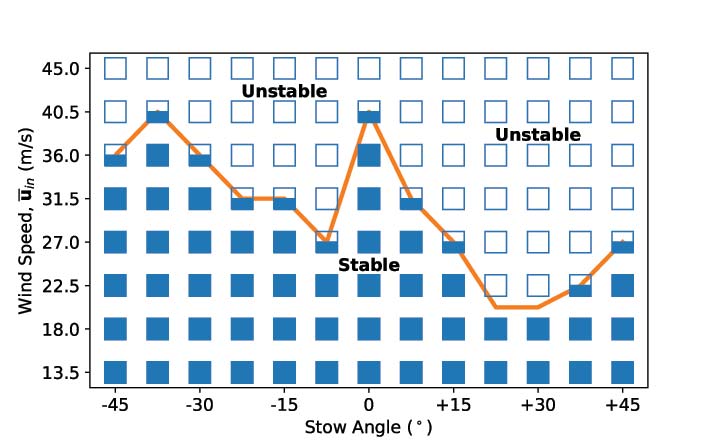Aero-Elastic Modeling and Advanced Field Testing for Resilient PV Systems
DuraMAT will provide new field testing and flow-field modeling capabilities for photovoltaic (PV) systems that help address key failure modes from high-wind loadings and enable validation of new material applications to address these failures. We'll also create a framework for high wind PV loading data.
This research investigates specific failure modes of tracker systems subject to high-wind loadings. The goal is to evaluate shortcomings in aero-elastic models of these tracker systems by providing field test data to validate model improvements. and thereby leading to more cost-effective and reliable designs and the ability to evaluate new material applications for balance of systems. The existing aero-elastic models used for structural and material designs were validated with wind tunnel tests and are under-predicting loads during certain conditions.
A single-axis tracker CFD model was developed to predict dynamic wind loading. Field measurements on a single-axis tracker deployed at the National Renewable Energy Laboratory's National Wind Technology Center were also conducted to provide for validation of the model, and this validation is still in process as the model continues to be developed. Both the model and the data are available to industry, academia, and stakeholders.
Core Objective
Multi-Scale, Multi-Physics Modeling
Location
National Renewable Energy Laboratory
Applications
The CFD model can be used by scientists, consultants, tracker designers for tracker design, validation of models, comparison to wind tunnel data or design of experiments.This project creates data sets that can be used and also added to by DuraMAT users. It provides the beginnings of a new industry testbed, where new balance of system designs using advanced materials can be validated, thereby leading to more rapid commercialization of new materials and designs and increasing the overall resiliency of PV systems.
Availability
The CFD model is open source and available to scientists, consultants, and tracker designers to use for tracker design, validation of models, comparison to wind tunnel data, or design of experiments. The measurement data is publicly available in a sanitized format to protect intellectual property of scientists and industry consultants who might want to validate their own models or wind tunnel data.
References
E. Young, X. He, R. King, and D. Corbus, "A Fluid-Structure Interaction Solver for
Investigating Torsional Galloping in Solar-Tracking Photovoltaic Panel Arrays”, submitted
to the Journal of Renewable and Sustainable Energy
S. Dana, E. Young, “Aeroelastic Modeling and Full-Scale Loads Measurements for Investigation
of Single-Axis PV Tracker Wind-Driven Dynamic Instabilities”, NREL PV Reliability
Workshop, Feb 27, 2020
Contact
To learn more about this project, contact Ethan Young.

Figure 1: Wind speed versus stow angle showing areas where the array is stable and unstable.